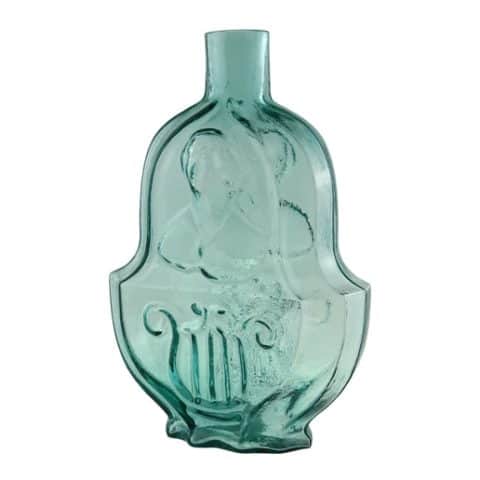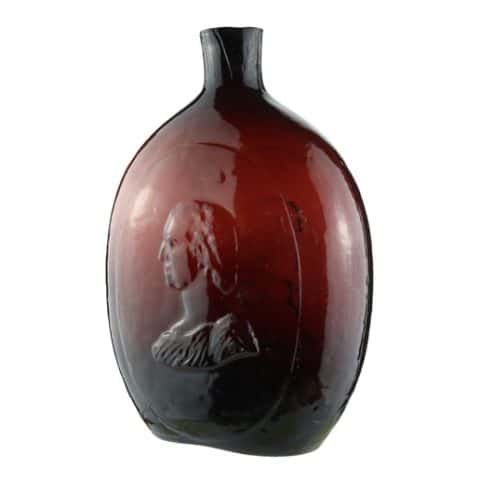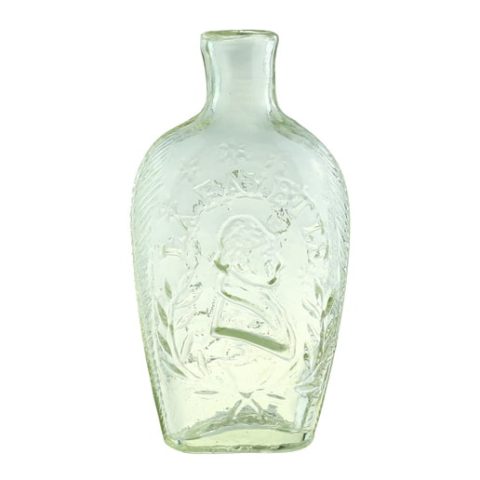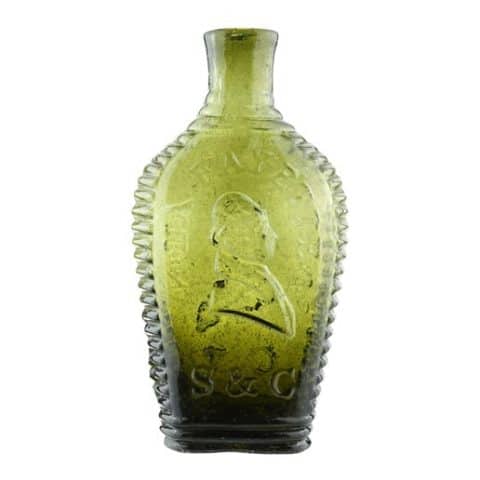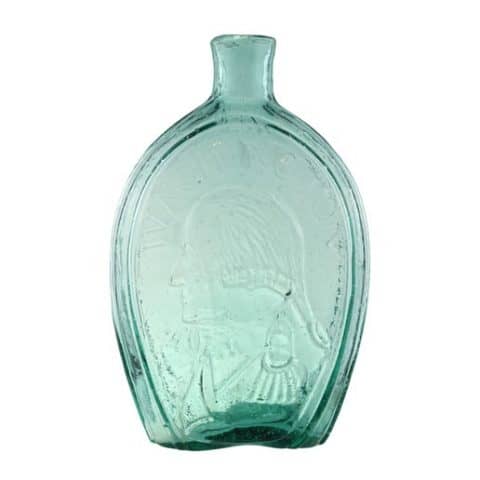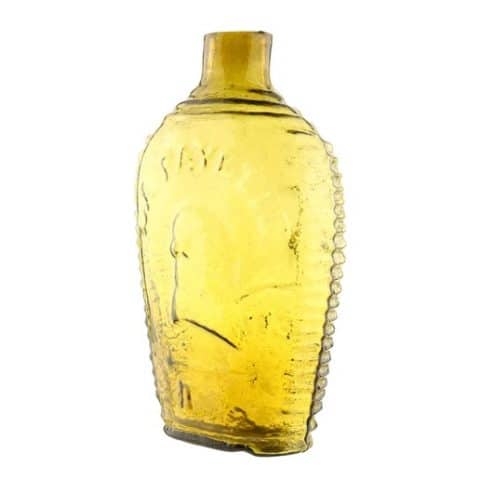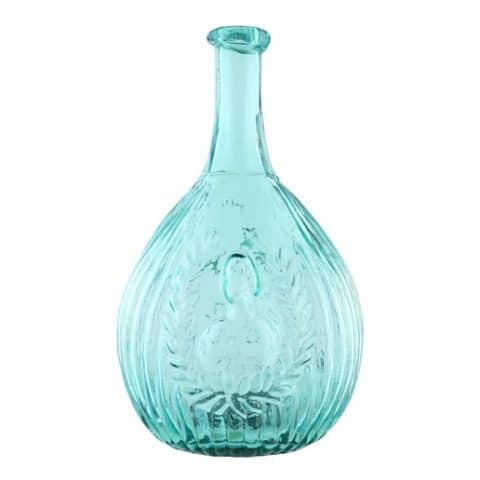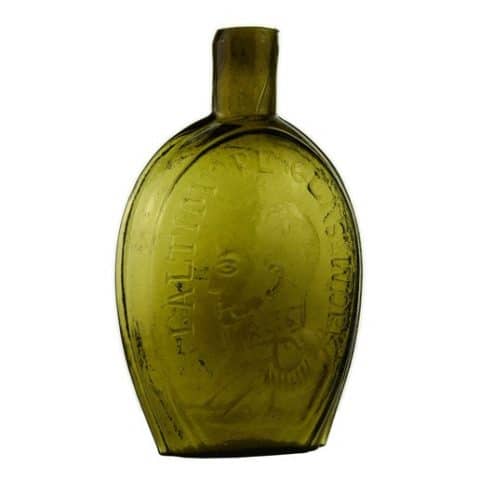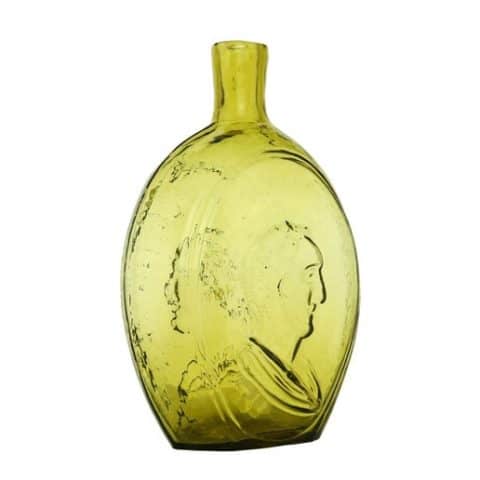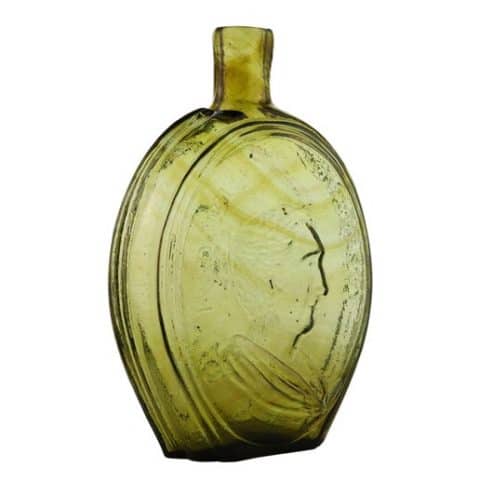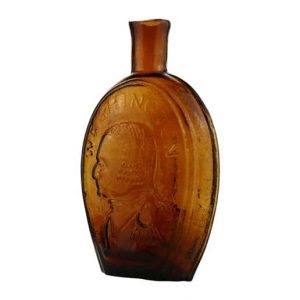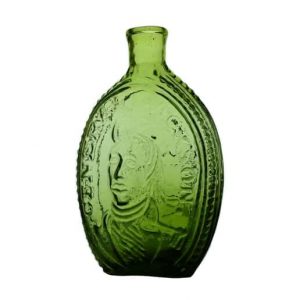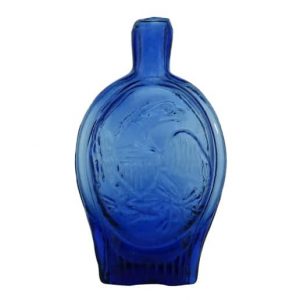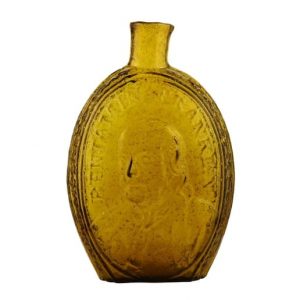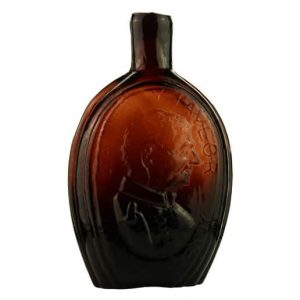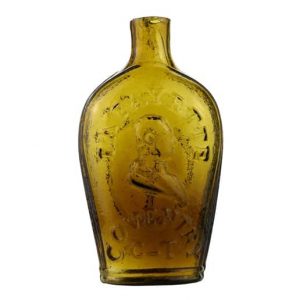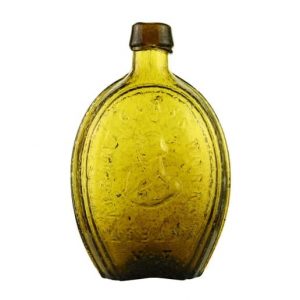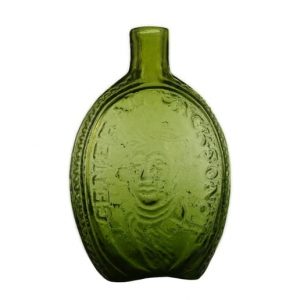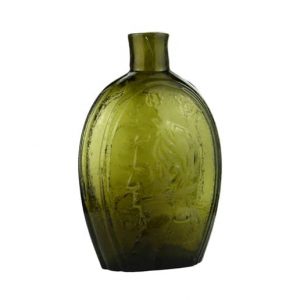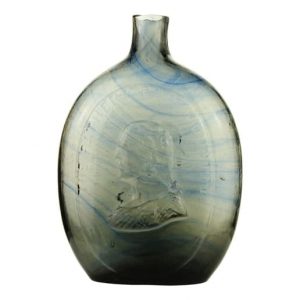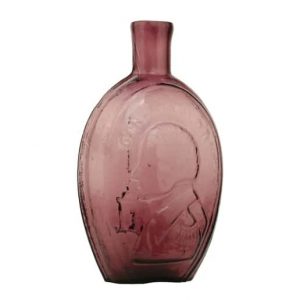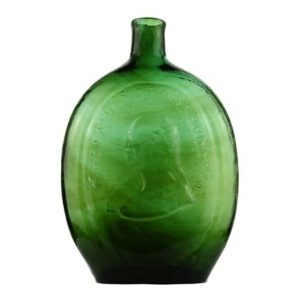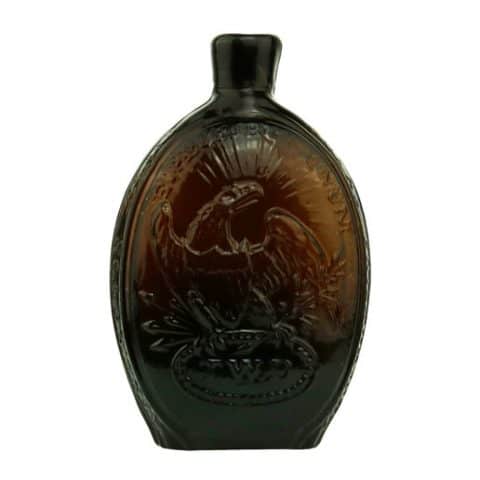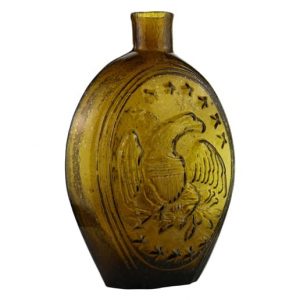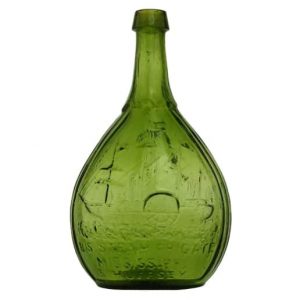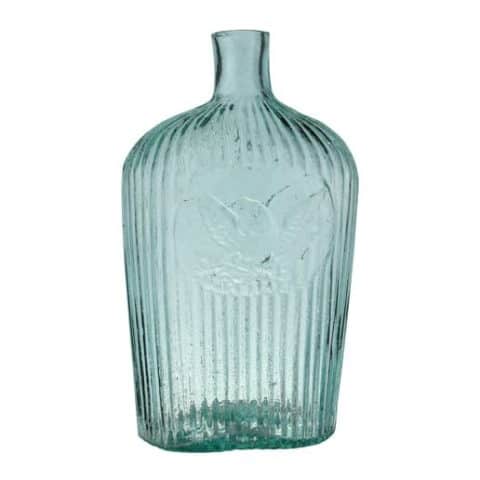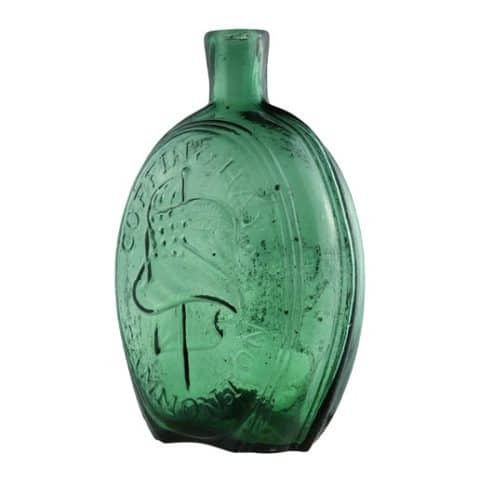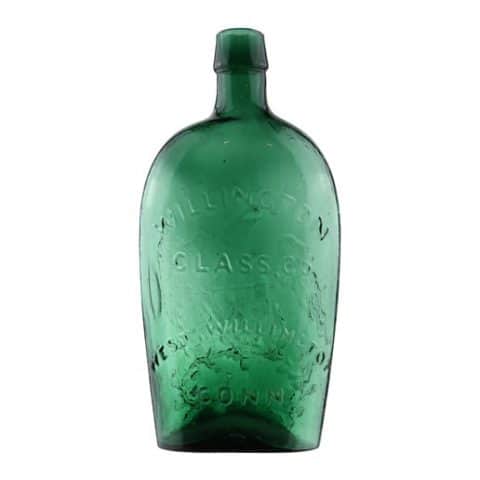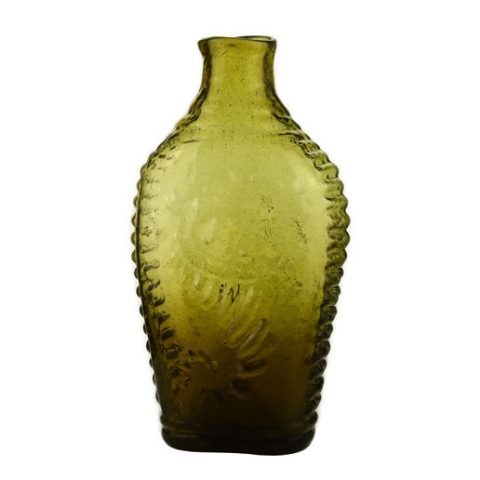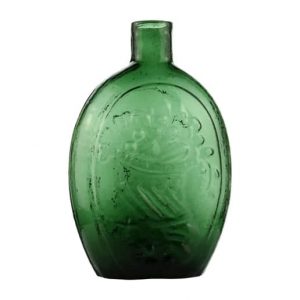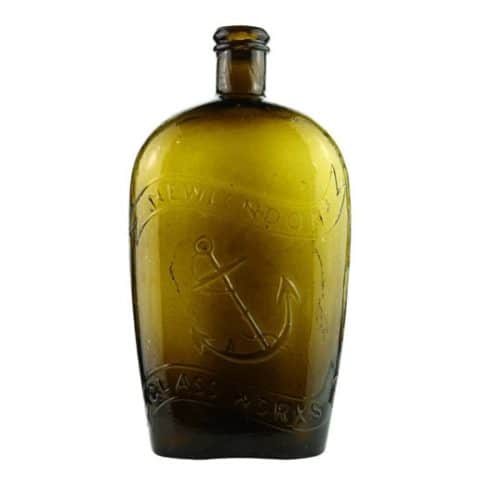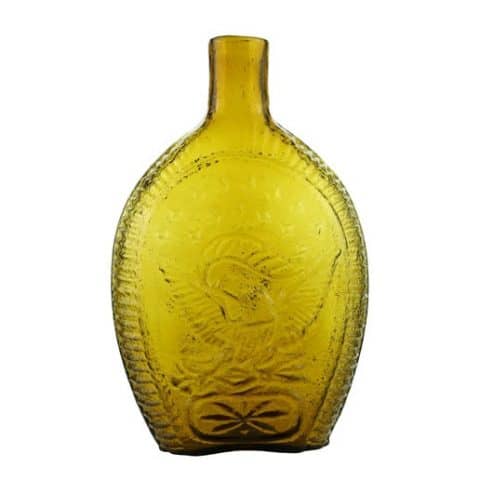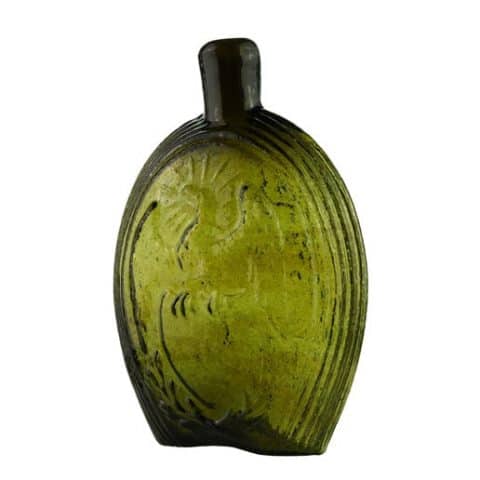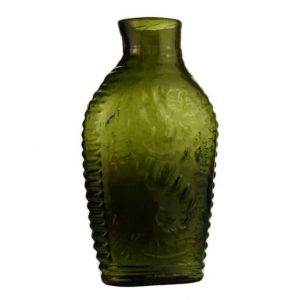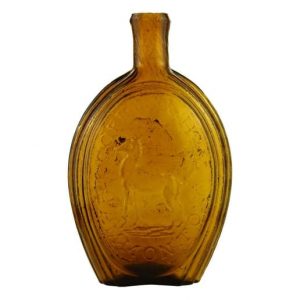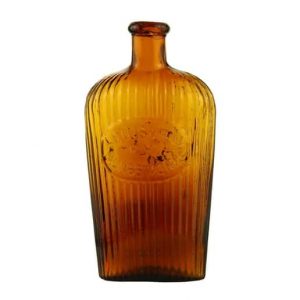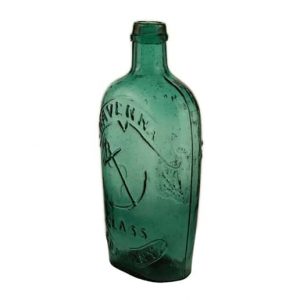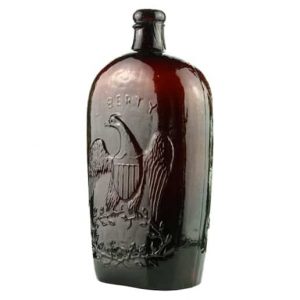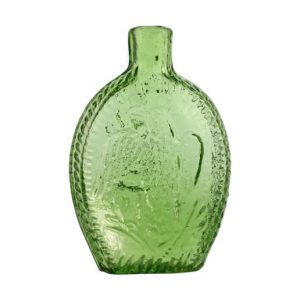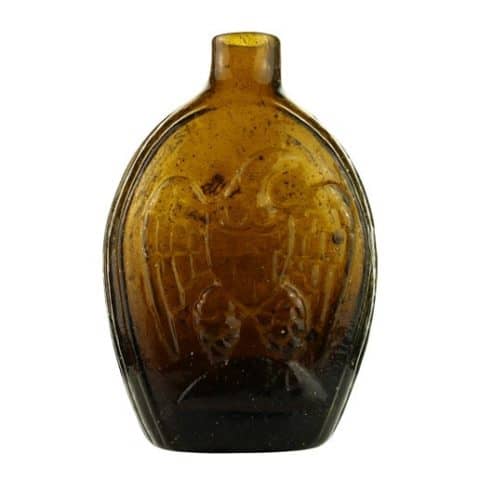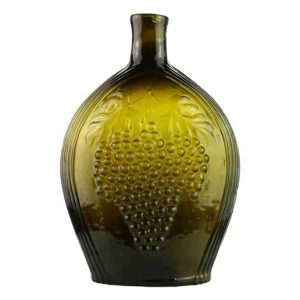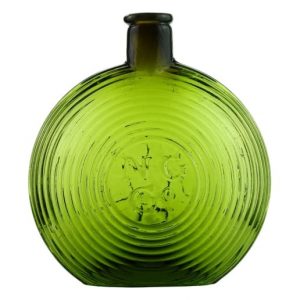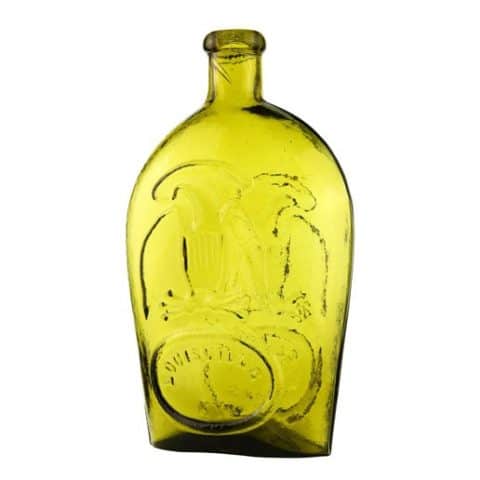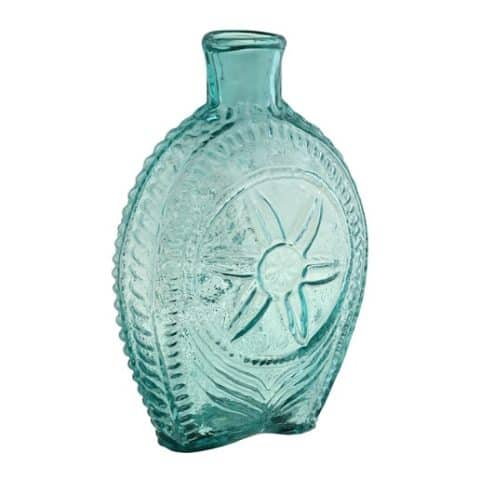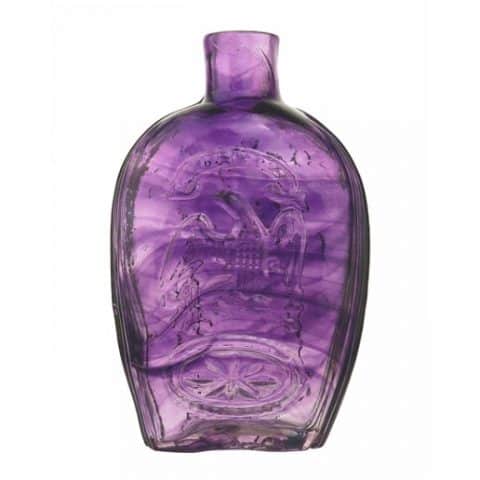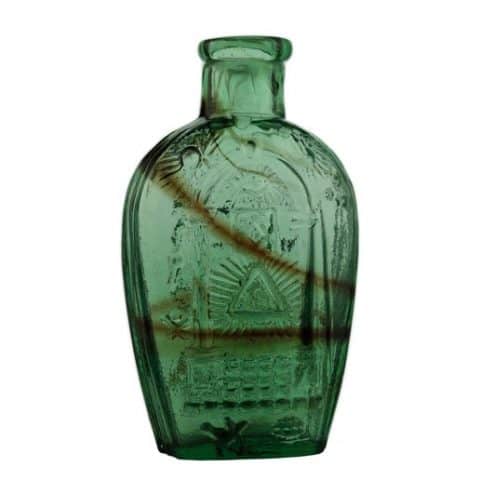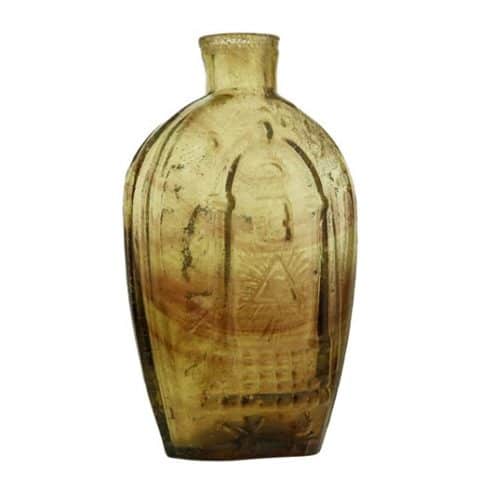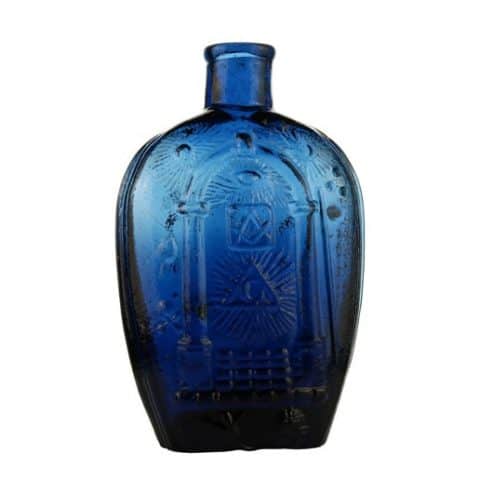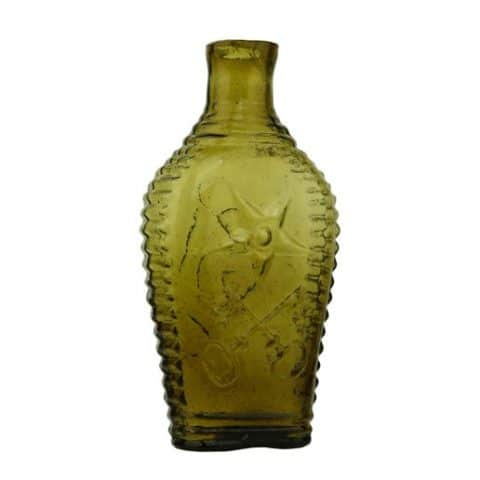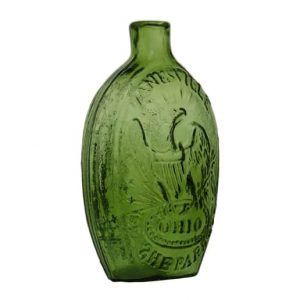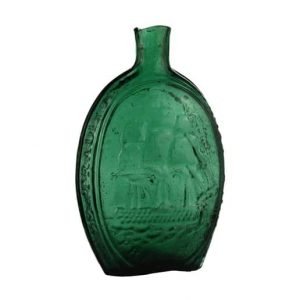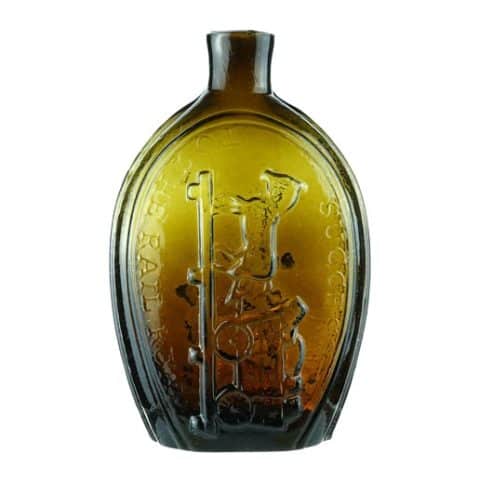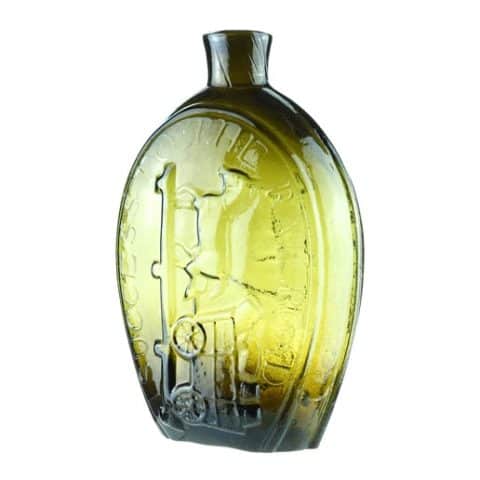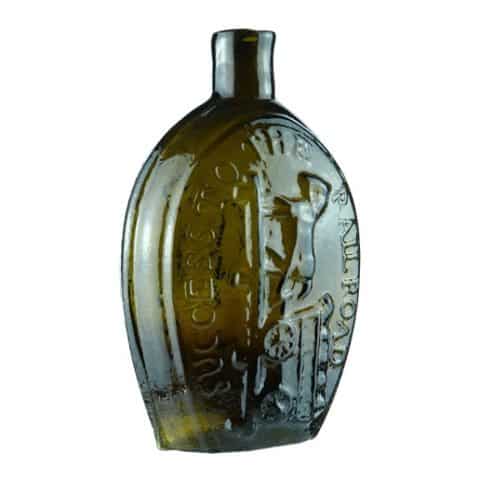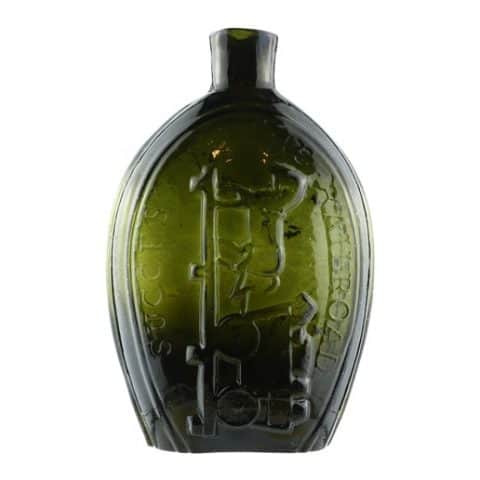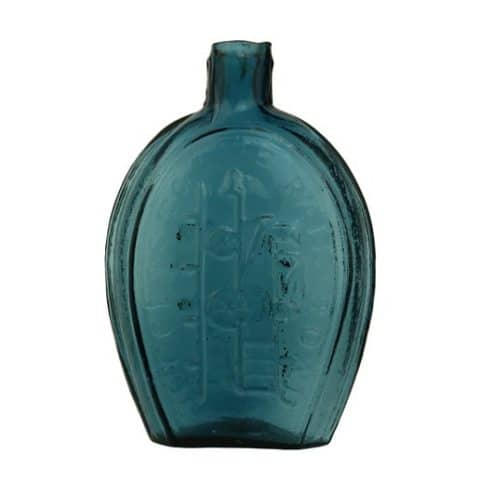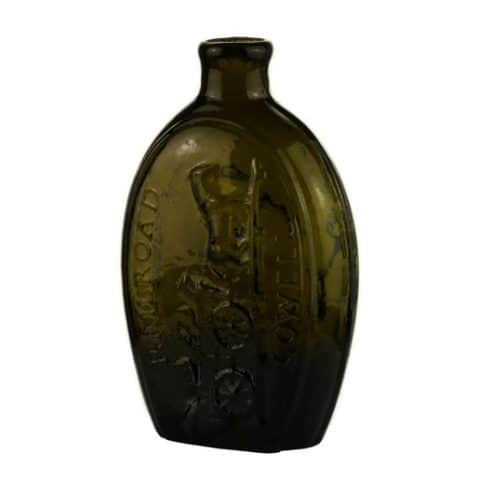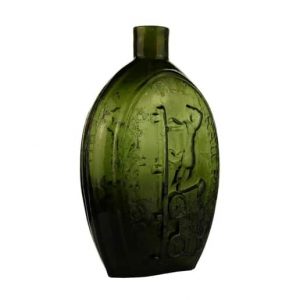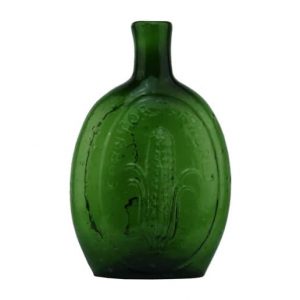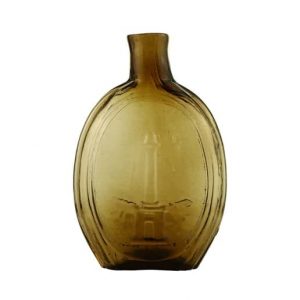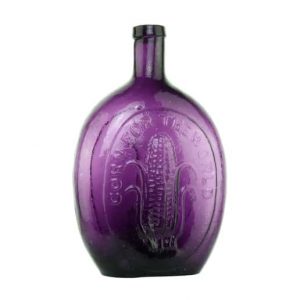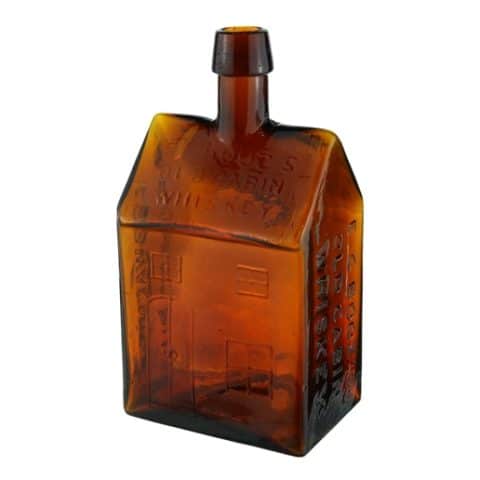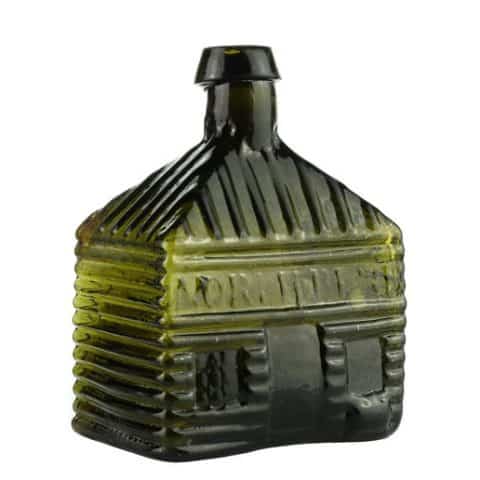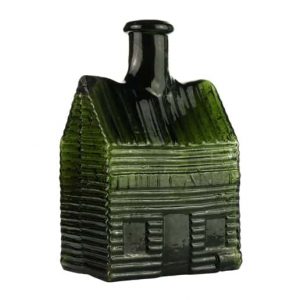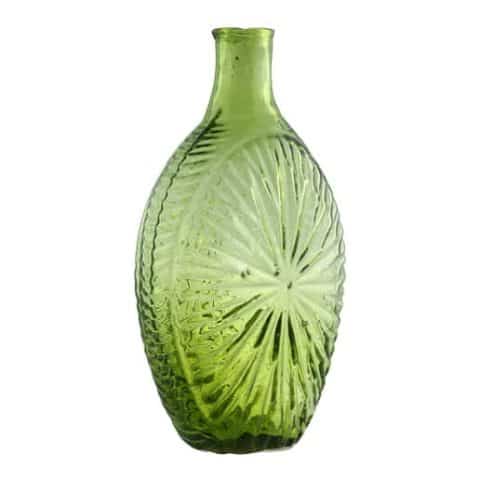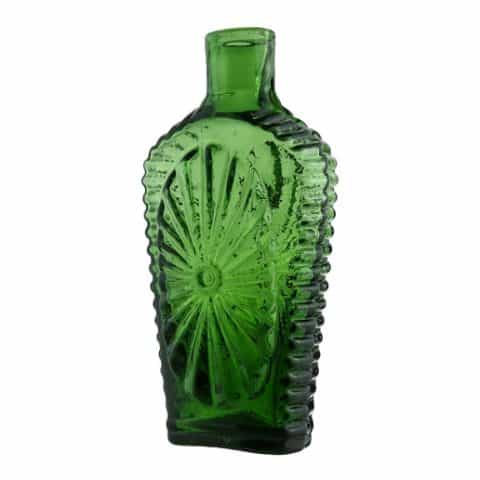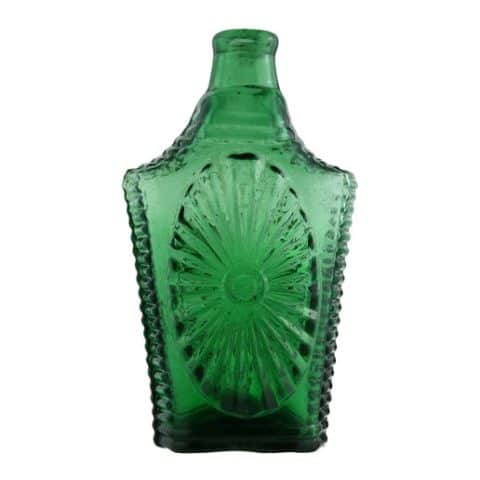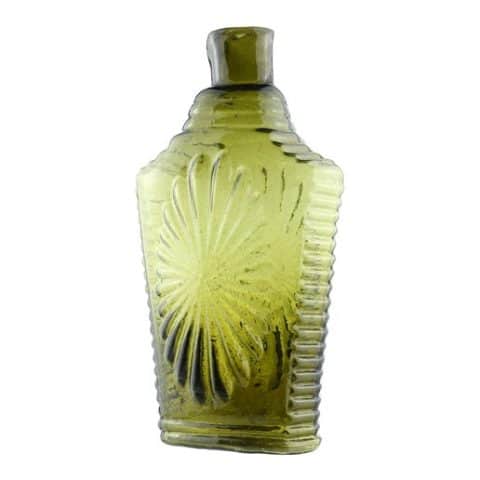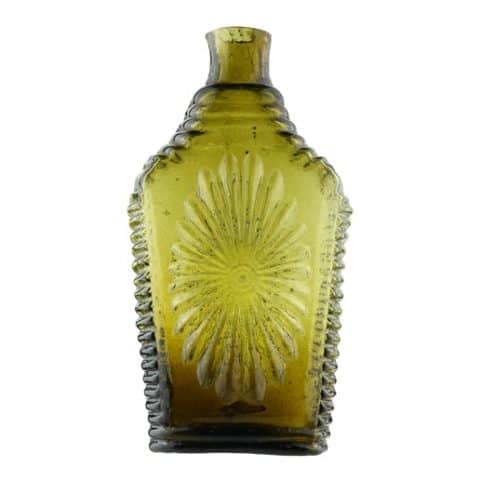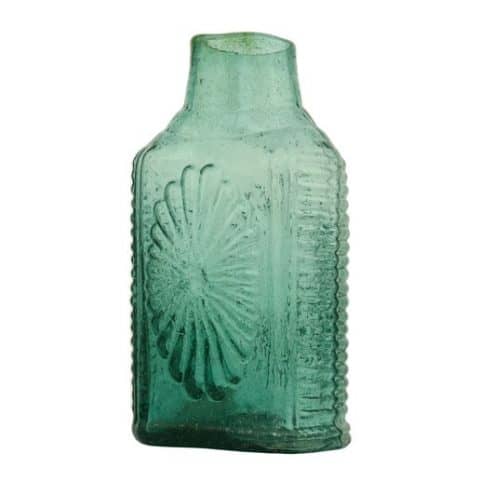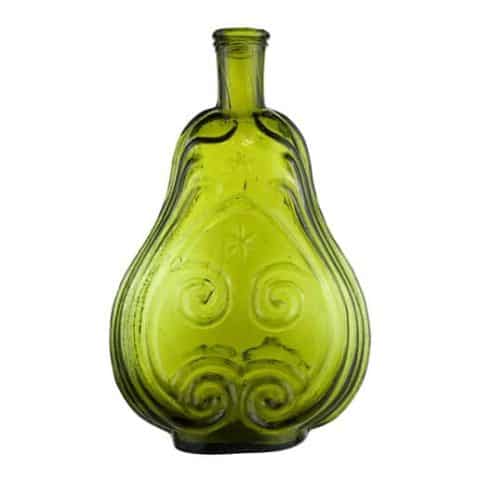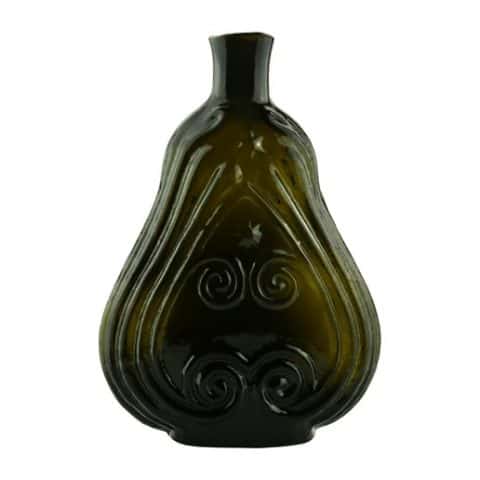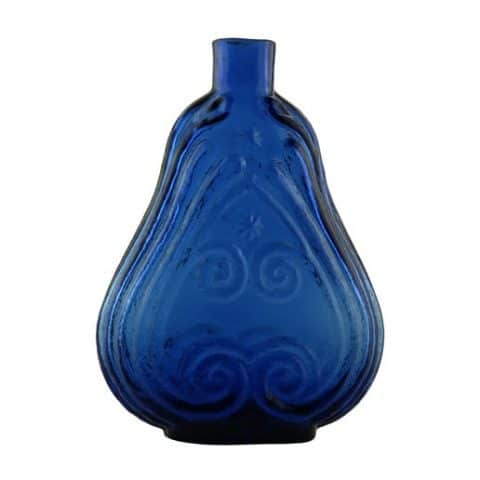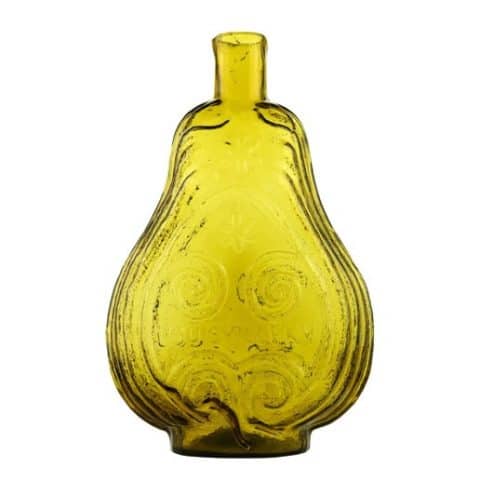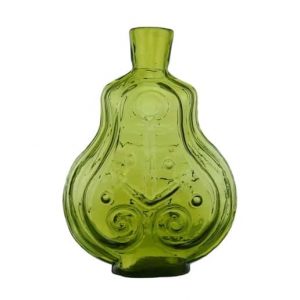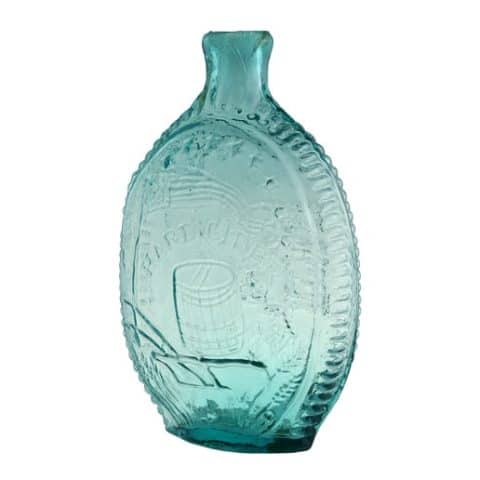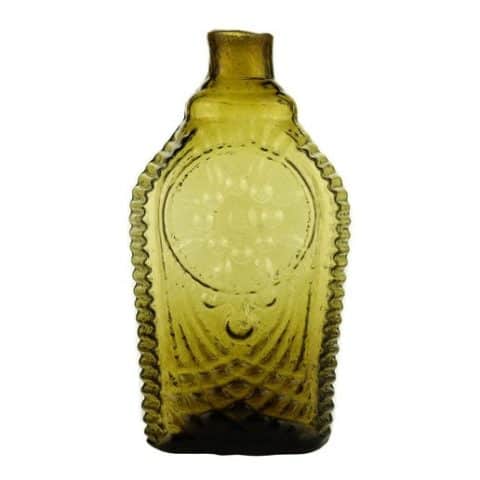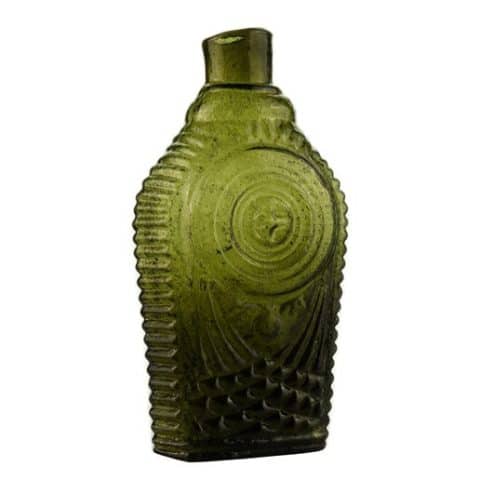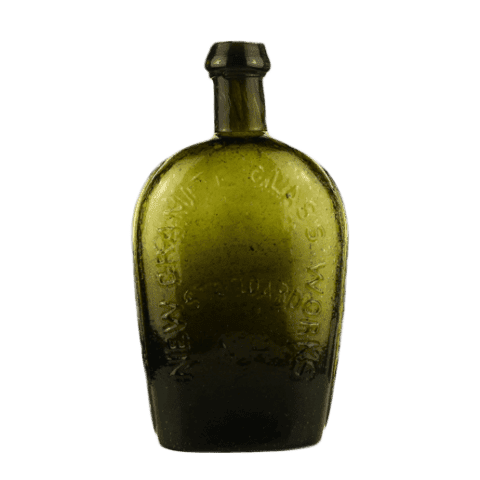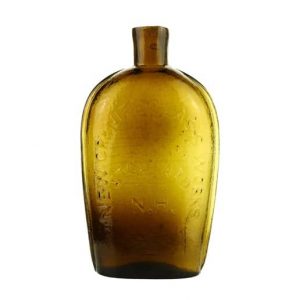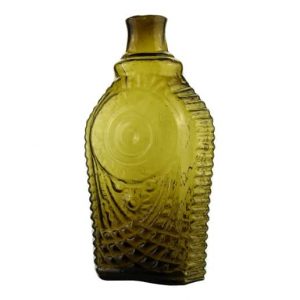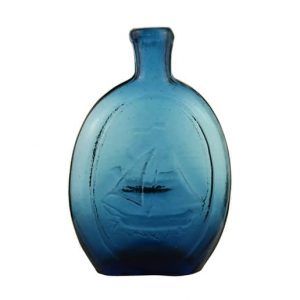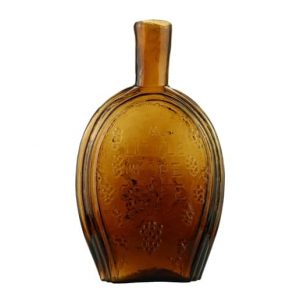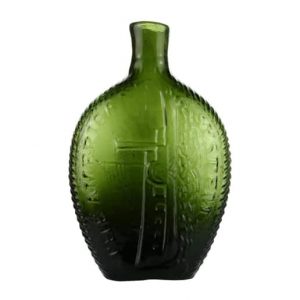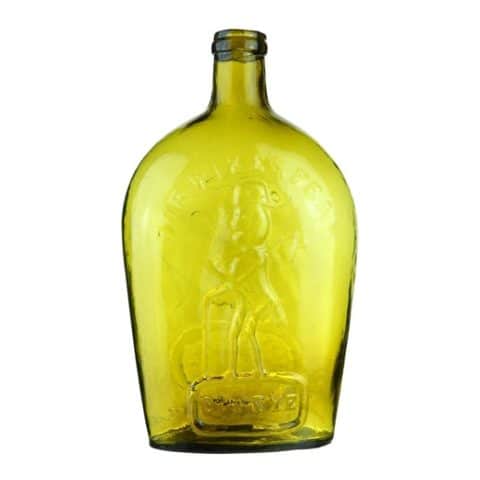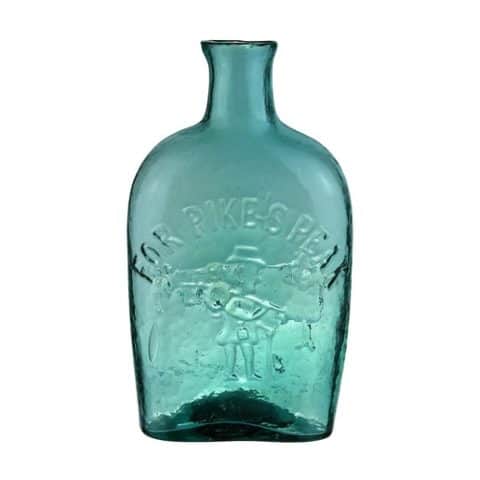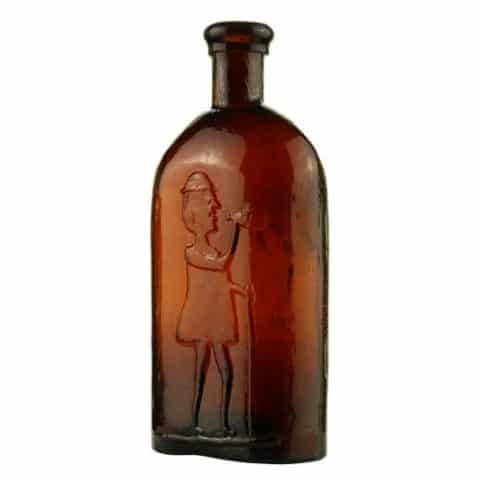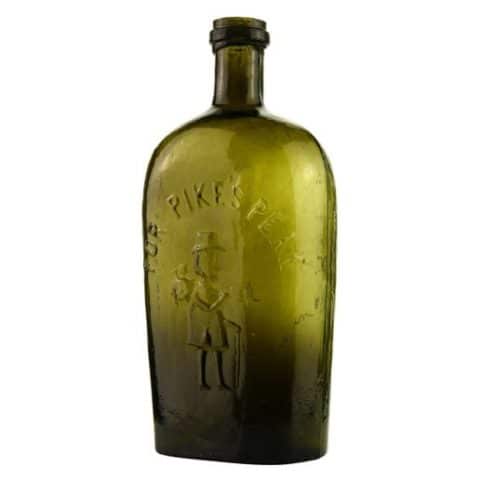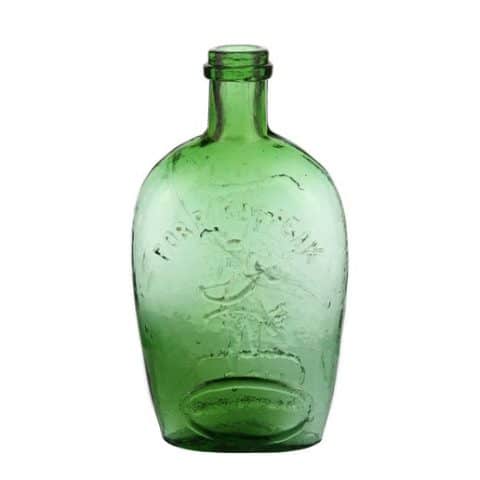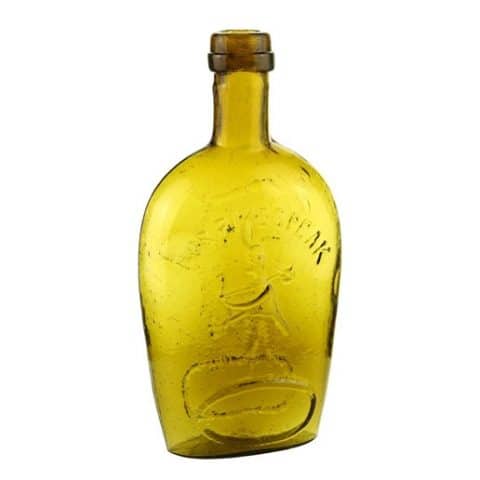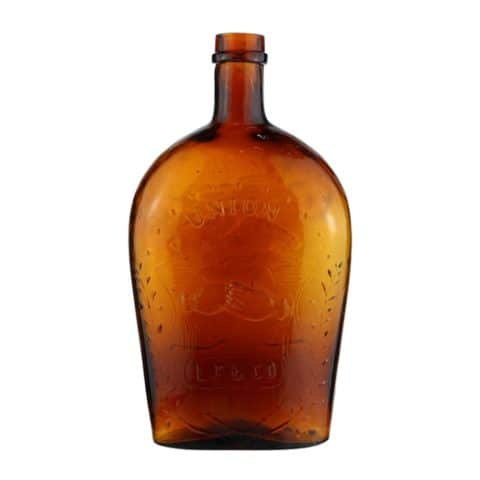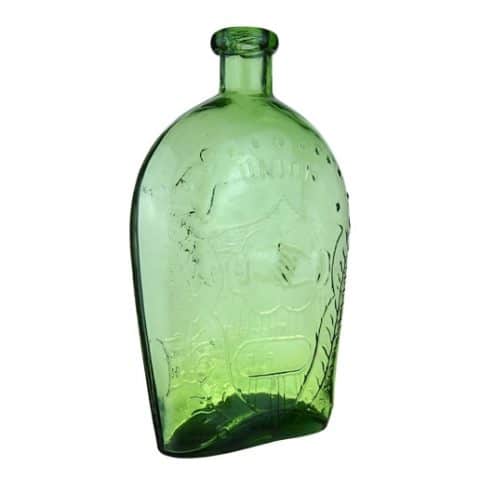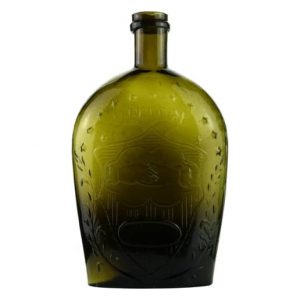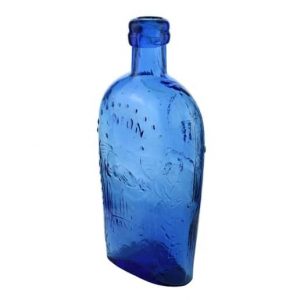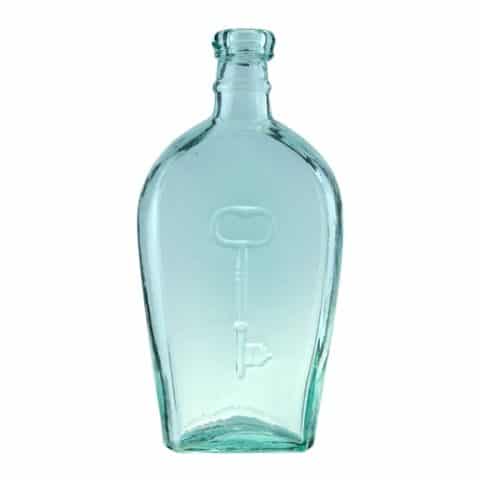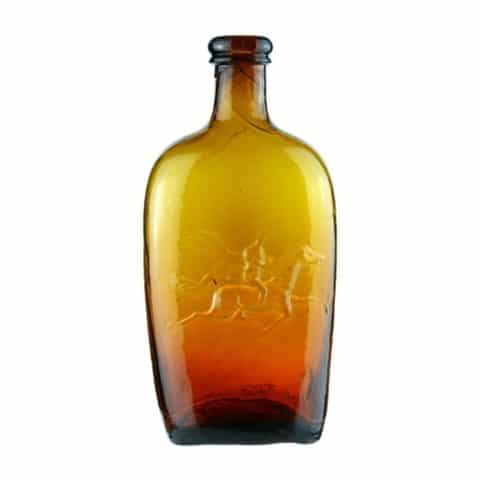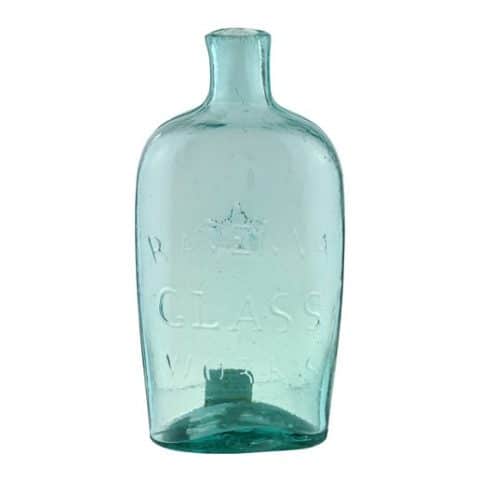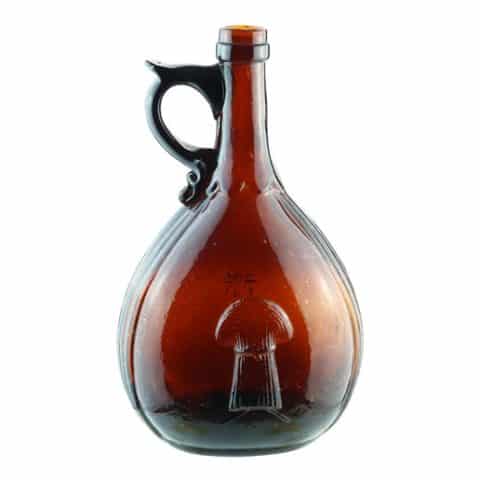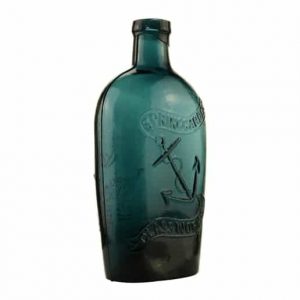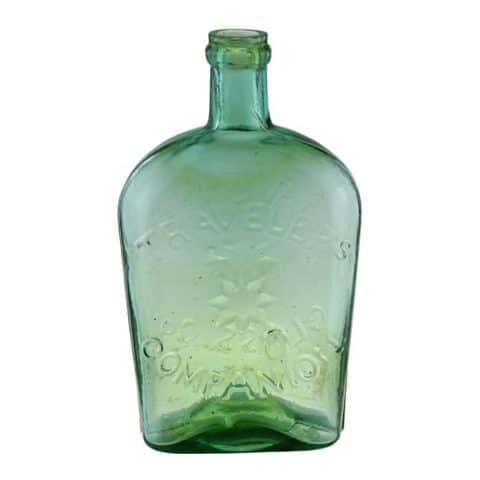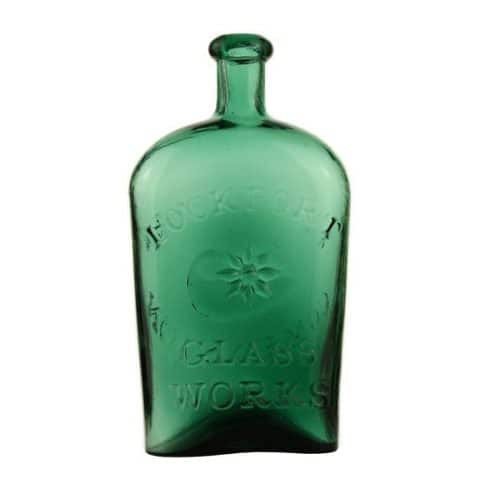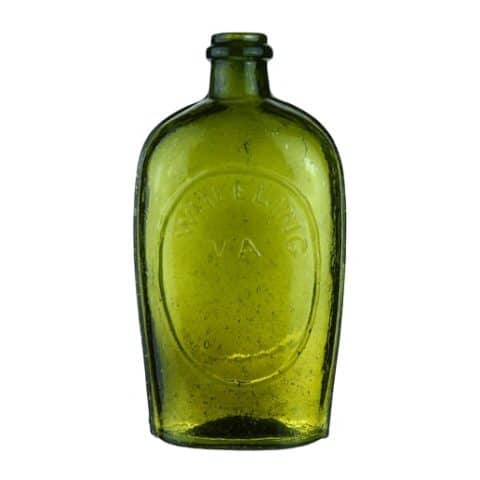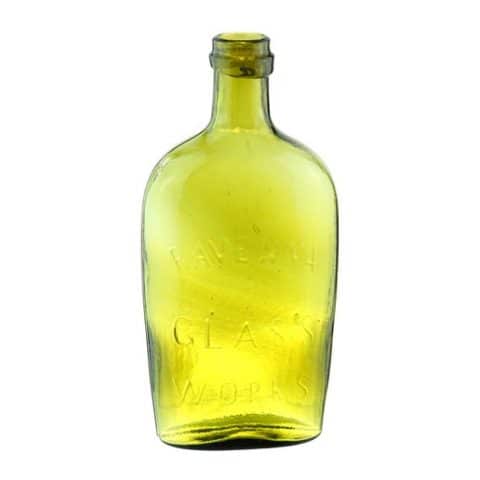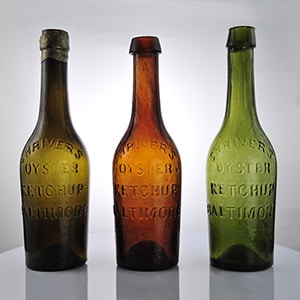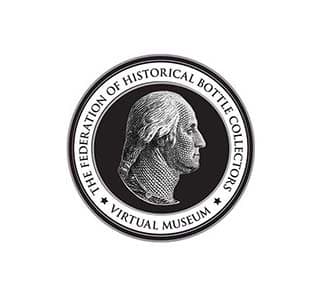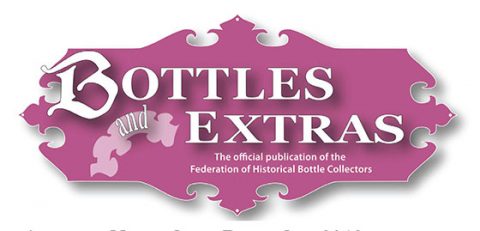GI – 66 General Jackson / Eagle Portrait Flask
GI – 66
“General Jackson.” And Bust – “J.R. / Laird. S.C. Pitt.” And American Eagle
Portrait Flask
John Robinson
Stourbridge Flint Glass Works
Pittsburgh, Pennsylvania
Medium Green Pint
Provenance: Anonymous
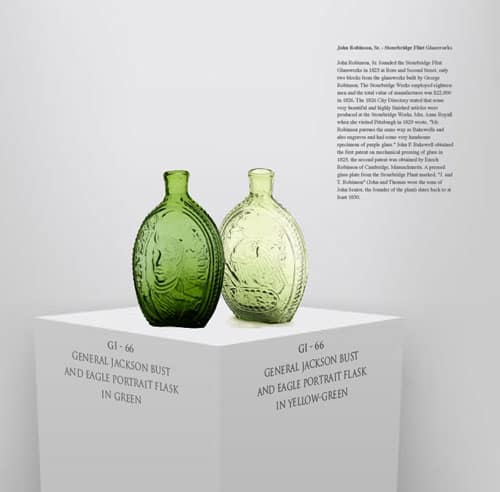
In collecting American historical flasks, the GI-66 General Jackson – American Eagle beaded pint has it all. We are fortunate to have a spectacular medium green GI-66 flask in our museum collection which we have paired with a second GI-66 pint in brilliant light yellow-green that may be unique. Both are amazing examples. This flask was produced in Pittsburgh at the Stourbridge Flint Glass Works which was founded by John Robinson in 1823.
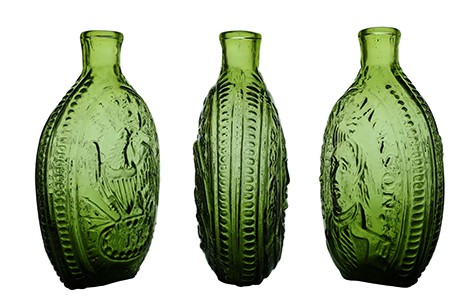
Our subject museum example is an extremely rare mold in a color no less. On the obverse of the flask, there is a prominently embossed General Jackson, in uniform, who is facing slightly left. ‘GENERAL JACKSON.’ is embossed in a semicircle horseshoe surrounding the bust of Jackson. There is an embossed period after Jackson.
Historically, it is very significant by having General Jackson depicted on the obverse. It is interesting to note that the very rare GI-6a early beaded Washington flask displays the same reverse as the GI-66. We can only imagine that the reverse of the mold was interchanged with the GI-6a.
On the reverse of the flask is an embossed American eagle with head turned to the right with a breast shield and seven bars. There are nine embossed offset stars in an arc above the eagle. The eagle wings are partly raised with the right-wing foreshortened. The eagle has a laurel branch in its beak, three arrows or thunderbolts in the left talon, and an olive branch is in the right talon. The eagle is sitting on an oblong oval with the embossed initials ‘J. R.’ within. Sixteen inner beads are within the oval. Beneath the oval is the embossed copy ‘LAIRD. S C. PITT’ in an upward arc. Joshua Laird, a prominent mold maker of the day, designed and made the mold for the reverse of this flask. He must have been so proud of his work that he “signed” or embossed his name as a painter might have done to a painting on canvas.
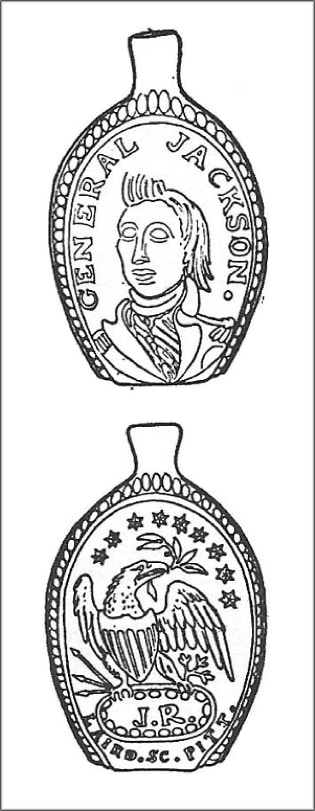
The pint flask has a plain lip and a pontil mark. The flask edges have horizontal beading with a vertical medial rib. Known colors are aqua and clear with an amethyst tint which is considered very rare and yellow-green, and medium green considered extremely rare. The flask was probably produced between 1824 and 1828.
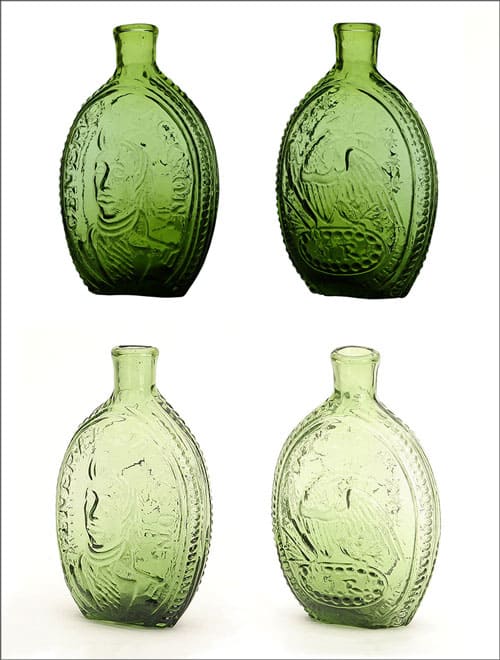
John Robinson, Sr. founded the Stourbridge Flint Glass Works in 1823 at Ross and Second Street, only two blocks from the glassworks built by George Robinson. The Works employed eighteen men and the total value of manufactures was $22,000 in 1826. The 1826 Pittsburg and Allegheny City Directory stated that some very beautiful and highly finished articles were produced at the Stourbridge Works. Mrs. Anne Royall when she visited Pittsburgh in 1829 wrote, “Mr. Robinson pursues the same way as the Bakewells and also engraves and had some very handsome specimens of purple glass.” John P. Bakewell obtained the first patent on mechanical pressing of glass in 1825, the second patent was obtained by Enoch Robinson of Cambridge, Massachusetts. A pressed glass plate from the Stourbridge Plant marked, “J. and T. Robinson” date back to at least 1830. John and Thomas were the sons of John Senior, the founder of the plant.
Read More: Heckler sells General Jackson Eagle Portrait Flask in Auction 90
Our second outstanding GI-66 pint in yellow-green has an interesting story.
I was fascinated by the color of this bottle. In over 50 years in this business, we have not had another bottle come forward in this color – and the impression and condition were also fantastic.
Norman Heckler
The consignor of the bottle first showed him a photograph of the flask while at an antique glass show in Ohio. The consignor and her parents had both been avid bottle collectors. Although she invited Hecklers to her house to view the bottle, she, however, declined the auction company’s invitation at the time to sell the bottle for her, saying she wanted to hang onto it as it reminded her of her father. “The photograph did not do this bottle justice – it was absolutely beautiful in person,” Norman Heckler, Sr. recalled. The consignor’s father had purchased the bottle, with her in 1971 from Ernie Burger, an antique dealer, for the price of $41.80. According to the consignor, several major collectors tried unsuccessfully to acquire the bottle over the years, with the late collector Edmund Blaske offering $750, and on another occasion, the bottle collector Roy Brown offering a new Cadillac. It has been in the family for the last 39 years and safely stored in a box. The Heckler pre-auction estimate was $40,000-$80,000. The price realized was $176,670.
Norman Heckler announced on their web site the sale of an extraordinary General Jackson | Eagle Flask in their Auction 90. The auction listing is as follows…
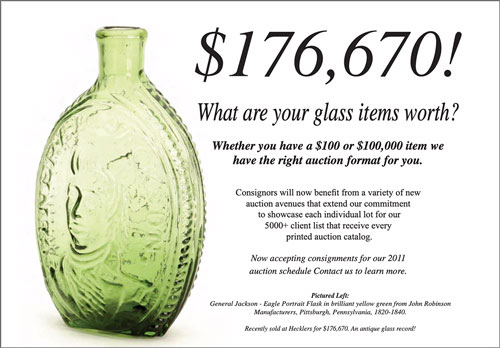
Support Images: “General Jackson.” and Bust – “J.R. / Laird. S. C. Pitt.” And Eagle Portrait Flask, John Robinson Manufacturers, Pittsburgh, Pennsylvania. 1820-1840. Brilliant yellow-green, inward rolled mouth – pontil scar, pint; (a reflection adjacent to a bubble at the interior of the base at the left side of the Jackson bust that occurred at the time of manufacture). Extremely rare mold in an extremely rare color, perhaps unique. Particularly strong embossing. – Norman C. Heckler & Company, Auction #90
Support: Reference to American Bottles and Flasks and Their Ancestry by Helen McKearin and Kenneth M. Wilson, Crown Publishers Inc., New York, 1978.
Support: Reference to Prized Midwestern Flasks, Mark Vuono, FOHBC 2018 Cleveland National Antique Bottle Show Souvenir Program.
Support Image: Almost colorless, slightly purple glass; mold-blown; plain lip, pontil mark. Obverse: Jackson, three-quarter view, facing left in uniform. Similar to GI-64. Reverse: American Eagle, head turned to right; shield with seven bars on breast, wings partly raised and right foreshortened. Thunderbolt (three arrows) in its right talons, olive branch in left. Laurel branch in eagle’s beak. Nine six-pointed stars above eagle. Eagle stands on oval frame with inner band of sixteen large pearls. Similar to GI-64. Inscription: “GENERAL JACKSON” in semi-circle above eagle; reverse – “J. R.” in oval frame below eagle; “LAIRD. SC. PITT.” in semi-circle below oval frame. Edges: horizontal beading with vertical medial rib. – Corning Museum of Glass
Join the FOHBC: The Virtual Museum is a project of the Federation of Historical Bottle Collectors (FOHBC). To become a member.




